TOP 15 recipes for pickling green peas for the winter at home, with and without sterilization
Green pea Is a traditional ingredient in salads, soups, appetizers or toppings. You can buy the product in the store or prepare it yourself. At the same time, homemade delicacies are distinguished by their usefulness, naturalness and pleasant taste. Preparing green peas for the winter is simple by following the recipes below.
Did you know that peas were a real delicacy until the 18th century?
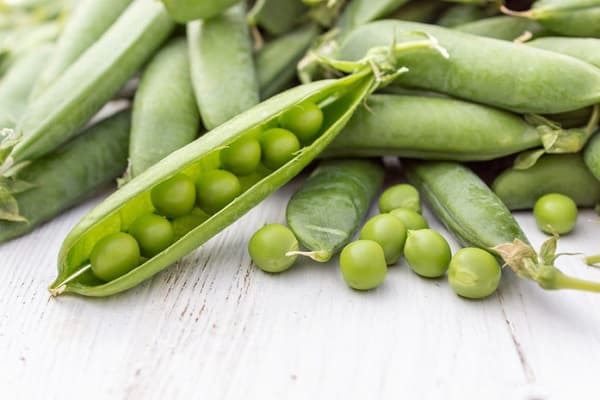
Useful properties and contraindications of green peas
The green vegetable has been known for its beneficial properties since ancient times as a remedy to fight various diseases.
The plant product is a storehouse of easily digestible protein necessary for the proper functioning of the digestive tract and building cells. Peas are useful the content of lysine, which is responsible for the work of the cardiovascular system. Peas are saturated with selenium, which cleanses the internal organs from the influence of toxins and carcinogens.
Peas contain microelements: magnesium, phosphorus, potassium, magnesium, iron, iodine, which ensure the full functioning of the human body. In the presence of vitamins C, PP, group B, the vegetable occupies a leading position.
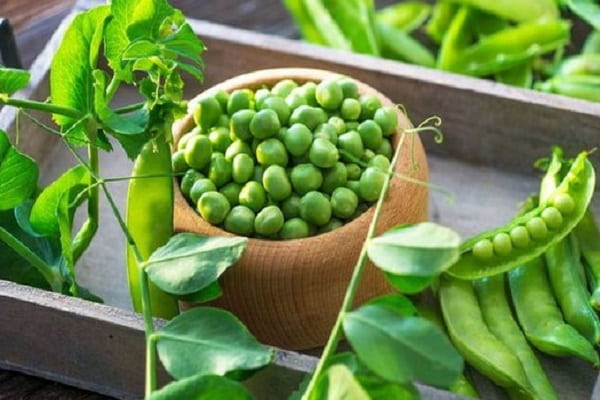
The low calorie content of the product should also be taken into account. There are 248 calories in 100 grams of peas.
But peas should be consumed in limited quantities by the elderly, pregnant girls, or people with gout. Legumes increase the level of uric acid in the body, which accumulates in the joints, kidneys and organs. Peas can cause increased gassing raw and even after heat treatment.
Interesting fact. In 1984, a record was set for eating peas. Janet Harris ate 7175 green grains in 60 minutes.
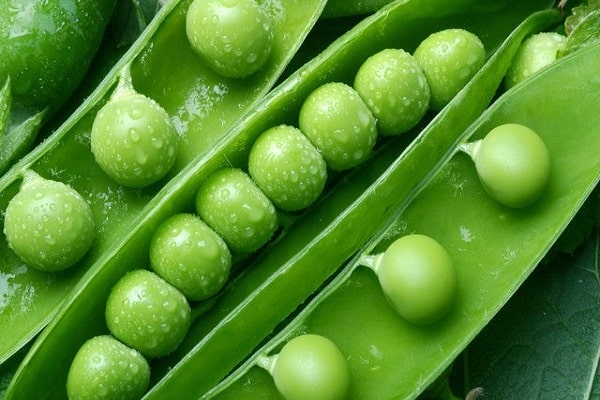
We prepare the main ingredients
It's easy to prepare green peas for the winter, given a few points:
- Choose young pods of bright green color with soft and juicy peas inside. Suitable varieties for conservation are:
- Alpha;
- Vegetable miracle;
- Vera;
- Ding;
- Jof.
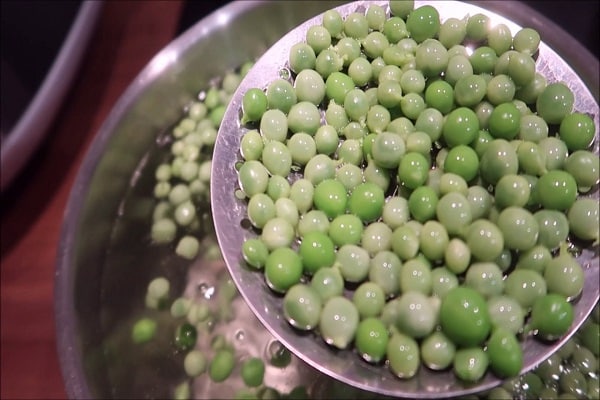
Due to the excess of starch in overripe grains, a cloudy sediment is formed during conservation, and when frozen, the dish will get an unpleasant taste.
- Prepare the grains correctly. Sort the pods, separate the grains. Throw away the damaged peas, put the rest in a bowl, rinse and dry on paper towels.
Measure the pre-specified amount of all ingredients in the recipe.

Useful Tips
It is easy to prepare green peas for future use without effort if:
- remove the pods on the 8th day after the flowering of the peas;
- use the vegetable on the day of harvest. The beans quickly lose their valuable properties and are filled with starch;
- cook only under sterile conditions to avoid the development of botulism.
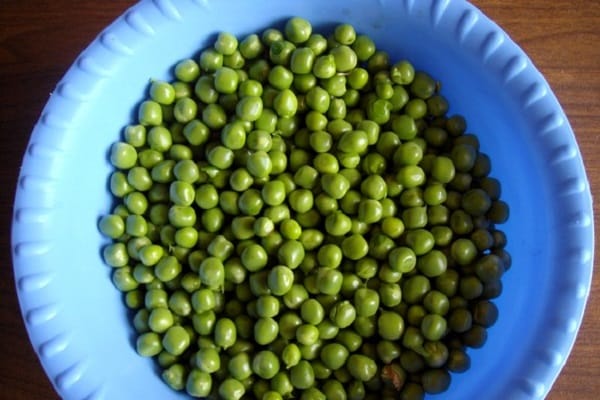
How to prepare peas for the whole winter at home
You can prepare green peas for the winter in different ways, while maintaining the benefits of the product. Young peas are dried and used for soups, mashed potatoes or other dishes. And from an already dried product, flour is prepared. Juicy and fresh beans lend themselves to freezing, both in pods and in individual peas. In addition, legumes can be easily salted, pickled and preserved even without sterilization.

We preserve
Green peas, without which not a single New Year can do, can be conveniently prepared for the winter in a simple way - put in sterile jars, pour boiling brine and roll up.
Interesting to know. Peas are the first vegetable preserved in a jar.
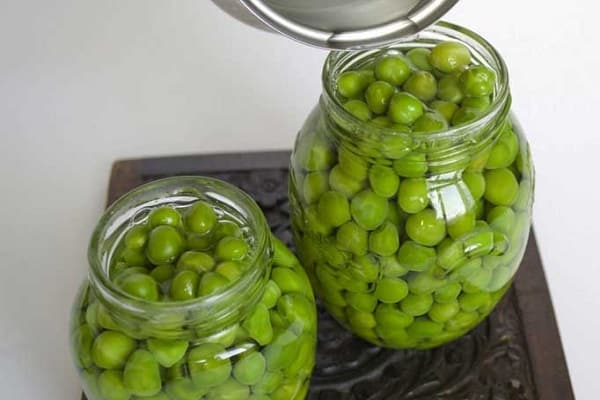
Preserve in the classic way
The classic recipe with sterilization has been tested for years and millions of housewives. It is better to harvest grains during the bountiful harvest - in early July.
Ingredients:
- Green peas - 600 grams.
- Water - 1 liter.
- Salt - 50 grams.
- Sugar - 50 grams.
- Citric acid - 2 grams.
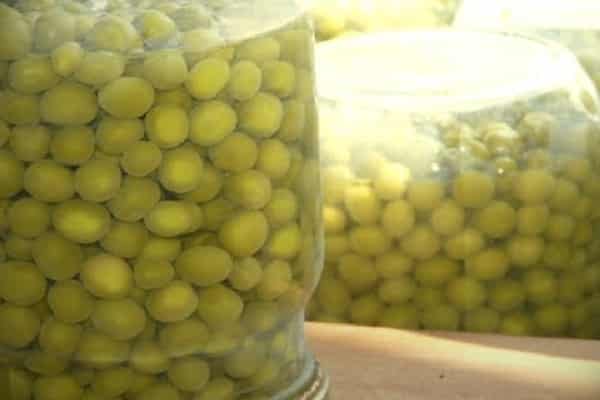
It is very simple to prepare peas in the classical way, following the following steps:
- Prepare the peas. Open the pods, pour the peas into a saucepan. Rinse the beans well and dry. Steam the peas in boiling water for up to 5 minutes.
- Wash the cans with baking soda. Sterilize glass containers in any convenient way: steam, in a microwave oven or in an oven. Also boil the lids.
- Boil clean filtered water in a saucepan, add salt, sugar and lemon.
- Put boiled peas in jars and pour over boiling brine. Cover the container with lids. Remove the opened peas, as they will make the brine cloudy.
- Sterilize seaming for 3 hours and roll up. Then transfer the glass container with canned peas on a towel, turning it upside down. Cover the jars with a blanket and leave as they are until completely cooled.
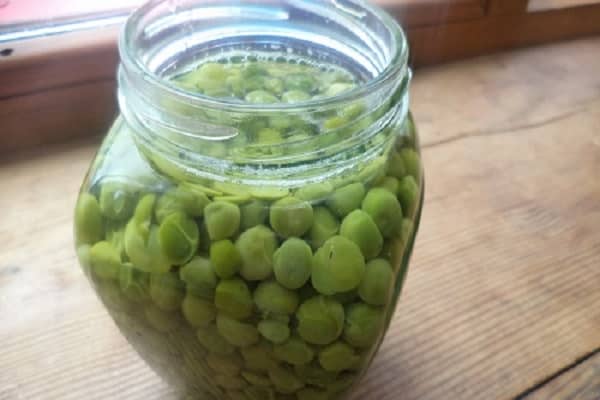
Fast way without sterilization
It is easy to preserve green peas in a way that does not require additional sterilization. The recipe is calculated for 3 half-liter cans or one 1.5-liter container.
Ingredients:
- Peas - 1 kilogram.
- Water - 1 liter.
- Citric acid - 3 grams.
- Salt - 90 grams.
- Sugar - 75 grams.
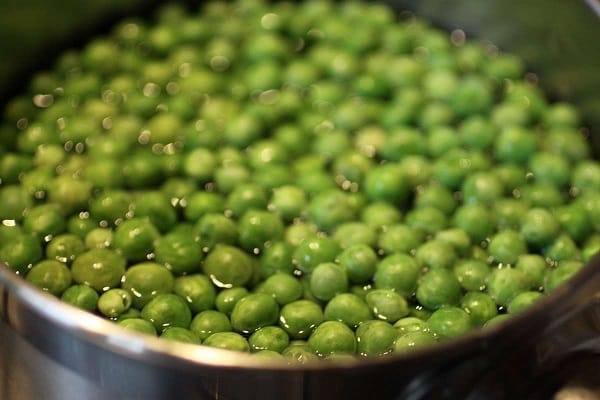
Step-by-step procurement plan
Boil water in a saucepan, adding salt and sugar. Boil the beans for 20 minutes. Pour lemon into a bowl and detect for 1-2 minutes. During this time, prepare disinfected banks. Place the peas in a sterile container with a slotted spoon, leaving 1-1.5 centimeters free from the top of the jar. Fill a bowl of peas with boiling marinade.
Close the jars with clean lids and roll up. Place the preservation on a towel with the lid down. Wrap containers in a warm duvet and leave for 24 hours. Next, move the blockage to a cool place out of direct sunlight.
Did you know? In the UK, pea-eating etiquette has been prepared. The grains should not be pricked with a fork or collected with a spoon, but kneaded with the back of the cutlery.
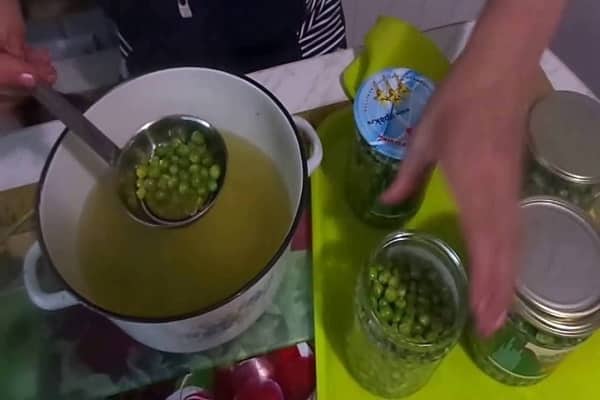
Canned with cucumbers
Among the winter preparations, the “Na Olivier” snack is also popular, which includes cucumbers along with peas. The salting tastes sweetish. Fans of spicy snacks are advised to add hot peppers to the recipe.
Ingredients:
- Water - 1 liter.
- Cucumbers - 750 grams.
- Peas (peeled) - 250 grams.
- Cherry leaves, black currant - 3 pieces each.
- Dill (rosettes) - 3 pieces.
- Garlic - 3 cloves.
- Vinegar - 30 milliliters.
- Salt - 15 grams.
- Sugar - 25 grams.
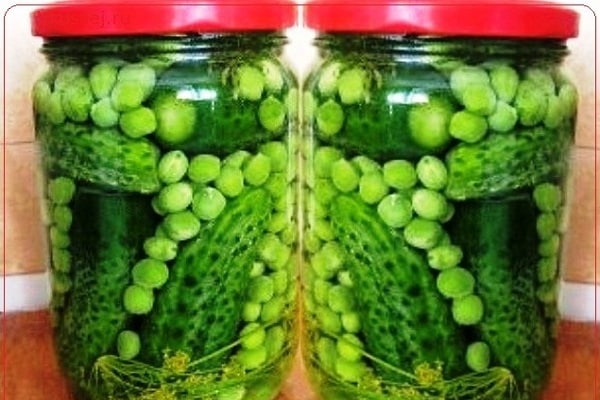
The ingredients are selected per 1 liter jar.
Cooking plan
To salt peas with cucumbers for the winter, you need to prepare all the ingredients in advance:
- separate the peas from the pods and boil in salted water for 5-7 minutes. Cook old beans for up to 30-40 minutes. Throw all the peas in a colander and cool;
- Rinse cucumbers and soak in cold water for at least 2 hours (or leave overnight);
- measure out the specified amount of bulk ingredients, vinegar and prepare fragrant cherry and black currant leaves;
- peel the cloves of garlic;
- disinfect cans and lids.
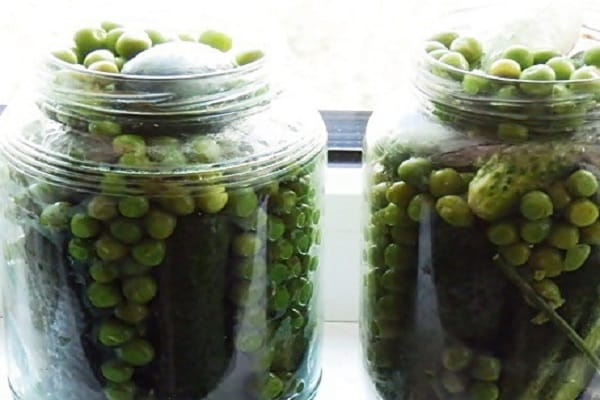
Thereafter:
- Put currant and cherry leaves, garlic cloves and dill heads on the bottom of the glass container. Pack cucumbers tightly in jars, cover with peas.
- Fill the jars with boiling water.
- Drain the water back into the pot and boil with the addition of vinegar, salt, sugar. Refill the container with brine and cover with lids.
Sterilize the blanks for 5 minutes and roll up. Canned vegetable platter for the winter is ready.

Marinate
Among the methods of harvesting peas for the winter, the recipe for pickled beans is especially good. The winter pea snack is used in salads, meat, fish, vegetable treats, or as a simple snack.
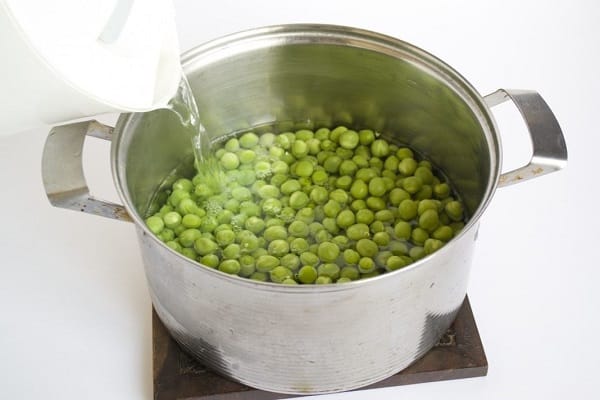
Pickled in pods
You can pickle peas in various ways. The most useful recipe is considered a vegetable marinated in pods. Thus, most of the vitamins and minerals contained in the solid tissues of the plant are preserved. And the pods themselves, when preserved, will soften and be saturated with marinade.
Ingredients:
- Water - 1.25 liters.
- Pea pods - 500 grams.
- Citric acid - 5 grams.
- Sugar - 25 grams.
- Peppercorns - 4 pieces.
- Salt - 50 grams.
- Cinnamon - 1 stick.
- Vinegar (3%) - 0.4 liters.
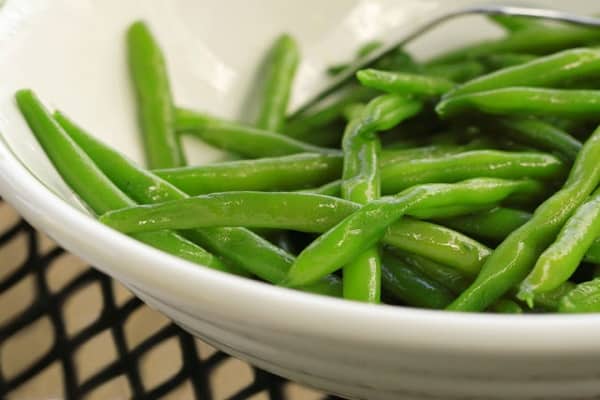
Cooking method:
- Rinse the pods and soak for 2-2.5 hours.
- Boil water (0.75 liters) in a saucepan, add citric acid and transfer the soaked peas. Blanch the vegetable for 3 minutes in boiling water.
- Place the peas in sterile jars, adding equal amounts of salt, black peppercorns and cinnamon.
- Bring the remaining water (0.5 liters) to a boil to prepare the marinade. Pour vinegar and sugar into a bowl. Boil the brine for 3 minutes and fill the jars with peas.
- Cover the glass container with lids and send it to a deep saucepan for sterilization. It is enough to give the blanks for 20-25 minutes processing and roll up the lids.
Turn containers upside down and leave to cool completely.
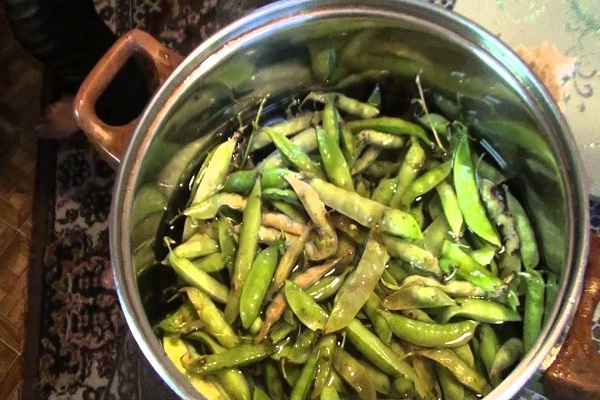
Marinating without sterilization
To prepare peas, similar to the store, it is better to use the proposed recipe without sterilization. It turns out the preparation is tender-sweet with green peas and a transparent marinade.
Ingredients:
- Peas - 500 grams.
- Water - 0.5 liters.
- Salt - 10 grams.
- Sugar - 10 grams.
- Vinegar - 25 milliliters.
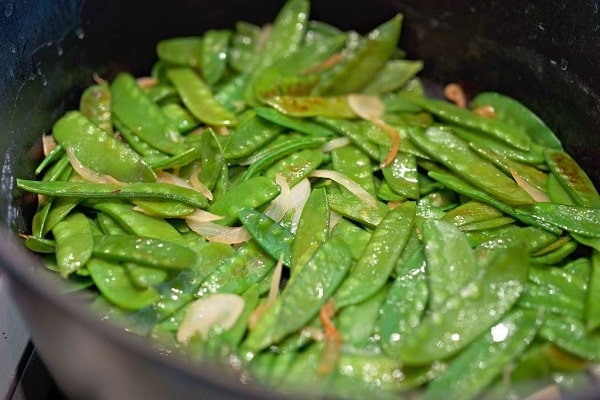
Cooking instructions
Transfer the peeled peas to a saucepan and pour boiling water over. Boil the beans for 15 minutes. Remove the peas with a slotted spoon and put in an ice-cold liquid for 3 minutes. Leave boiling water for the marinade, adding salt, sugar and vinegar. Transfer the peas to disinfected jars. Fill containers with boiled brine and seal. Turn the container upside down, wrap it in a blanket and cool.
A simple preparation without sterilization is ready.

Pickle without vinegar
Blanks prepared for the winter without vinegar are considered the most useful, as they have a beneficial effect on metabolism.
Ingredients:
- Peas - 5 kilograms.
- Salt - 15 grams.
- Water - 4 liters.
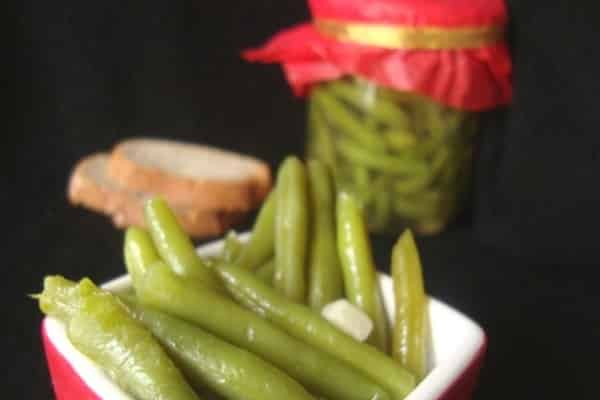
Cooking plan
- Place the green peas in a cloth bag.
- Prepare the salted marinade and boil it. Dip a bag of legumes in boiling liquid and steam for 5 minutes.
- Take a pot of cold water. Briskly toss the pea bag into the ice solution.
- Put the cooled semi-finished product in jars and pour the boiling marinade over the containers. Seal the jars with lids.Store in a cool place.
Green grains that have undergone such conservation are allowed to be consumed by people with gastrointestinal or mucous membrane problems.
To keep the blanks longer and not explode, you need to sterilize the container with peas for at least an hour.
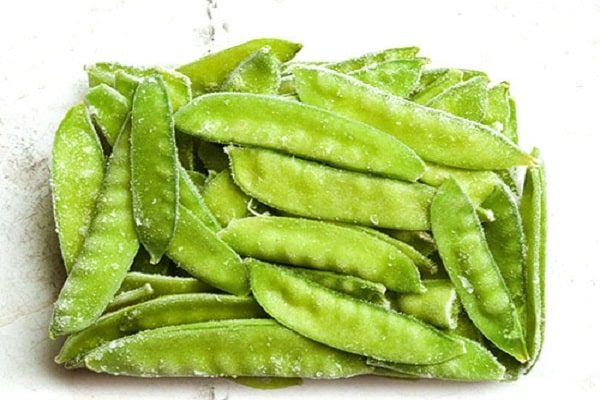
We dry
Drying is a simple way of harvesting green peas for the winter, which allows you to maximize the preservation of nutrients and vitamins.
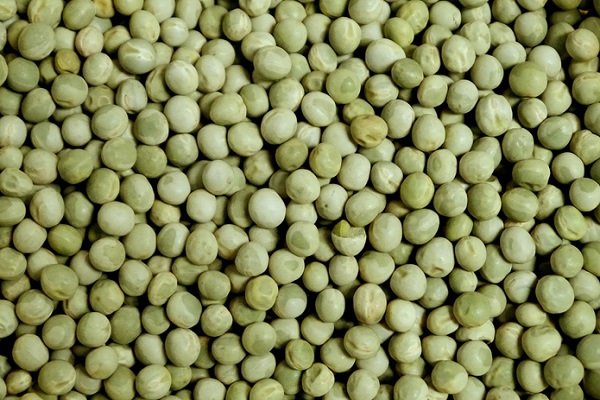
Drying methods
Beans are dried in two different ways:
- In pods. To do this, sort out the pods, rinse and steam in a colander over boiling water. Then cool the legumes, break them into several pieces and place them in one layer on a baking sheet. Dry the vegetable in the oven at 60-70 degrees.
- Only peas. In this case, open the pods and sort out the grains. Rinse the prepared beans with water and boil in boiling water for 2-3 minutes. Immediately dip the peas into the ice-cold liquid and put them back into boiling water. Once again, use a slotted spoon to transfer the beans to cold water. Thus, the beans will have a natural green color during further processing. Spread the peas on a baking sheet in one layer and send them for drying in the oven at a temperature not exceeding 40 degrees. After an hour, remove the dryer from the oven and cool.
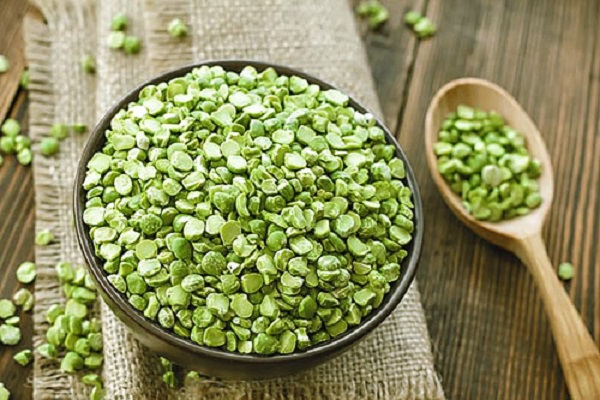
If there is a special kitchen appliance for drying fruits and vegetables, peas are also harvested for the winter by putting the grains on a special grid and setting the appropriate mode.
The main thing when drying is not to miss the perfect harvest moment - 30 days from the moment the plant blooms. The grains will be sweet and tender. Tough and overripe peas are not suitable for drying, as they have an unpleasant bitter taste.
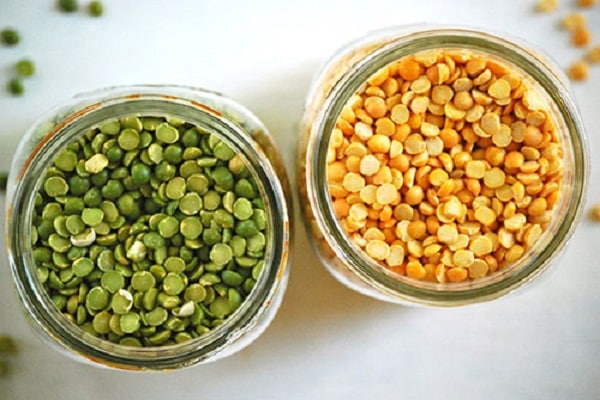
Freeze
Frozen peas are an excellent and quick alternative to all methods of preparing food for the winter. This method takes a minimum of time and effort, and legumes are stored for up to 8 months.
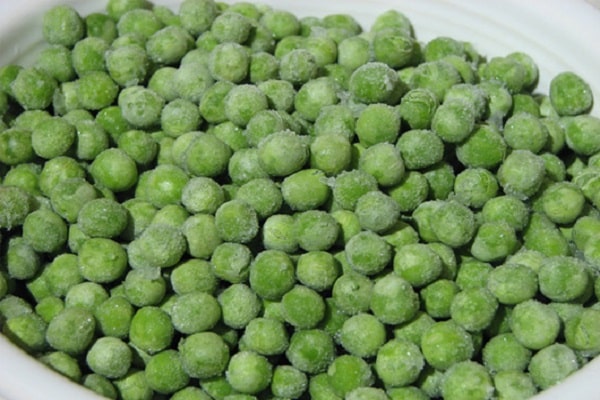
Methods for freezing vegetables
There are 3 known ways to quickly freeze beans at once:
- The classic version. Rinse the shelled and sorted peas with water. Dip the grains in boiling water and transfer to an ice-cold liquid. After that, dry the peas and sprinkle them in a thin layer on a special tray of the freezer. Pack frozen grains in bags or containers, indicating the date of freezing of the product.
The classic method of freezing is suitable even for overripe legumes; it will improve the taste of the product.
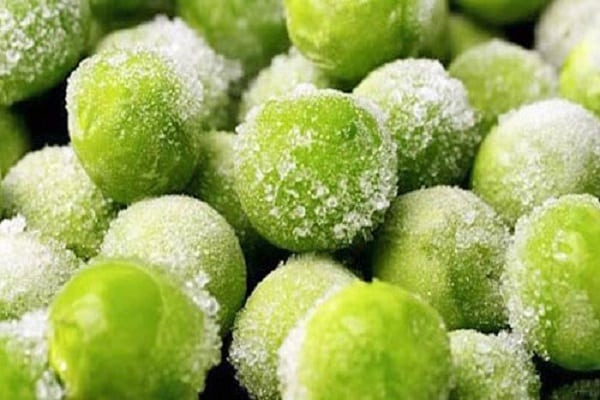
- Express option. Rinse and dry the vegetable pods well. Take out the peas and fill the bags with them, releasing the air as much as possible. Give the blanks a rectangular shape and send to the freezer.
- Fast freezing. Wash legumes and inspect for damaged or yellowed pods. Cut the pods into several pieces. Transfer the chopped vegetables to a colander and blanch for 3-5 minutes. Then douse the pods with water and place them on a napkin to dry. The last step is to place the pods in bags and put them in the freezer compartment.
Frozen pods or peas are used to prepare the first courses, without even waiting for them to thaw. But for salads and snacks, defrost the beans on the bottom shelf of the refrigerator.
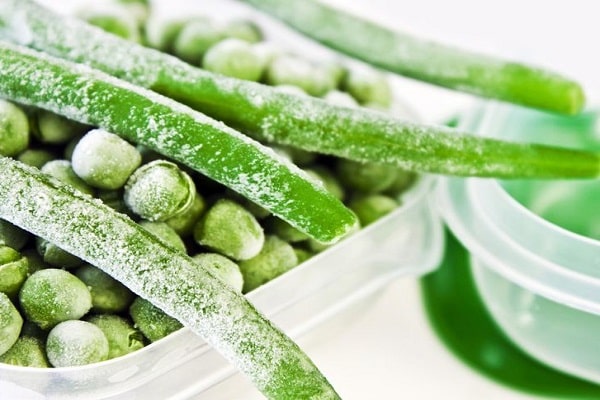
Interesting fact. Great Britain is considered the largest producing country of green peas. Sowing more than 40 thousand hectares a year with green peas, she produces 160 thousand tons of frozen product, which is distributed around the world.
About the rules for storing peas
The term and storage conditions of legumes depend on the harvesting method:
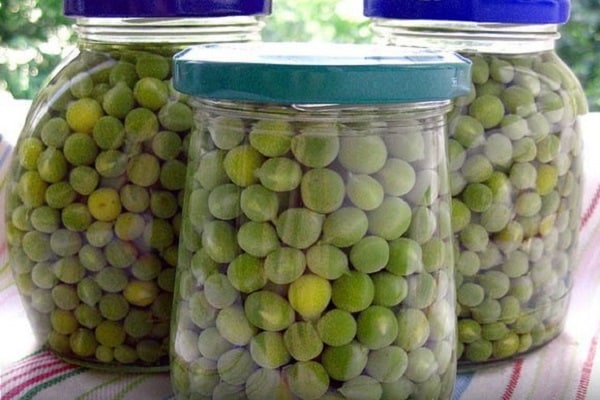
- dry peas are stored in a darkened room with constant air supply and low humidity. It is better to place dried grains in glass containers or cloth bags. Eat throughout the year;
- frozen grains are left in the freezer compartment, packed in plastic bags or plastic containers. The shelf life of the product is no more than 10 months;
- canned, pickled peas retain their beneficial properties for 1 year. If you put the conservation in the cellar or leave it in the refrigerator, the shelf life of the product will increase to 2 years, subject to the rules of procurement.

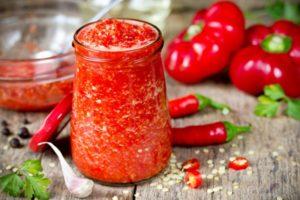
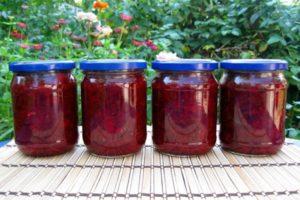

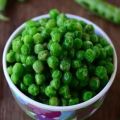

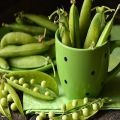

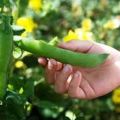
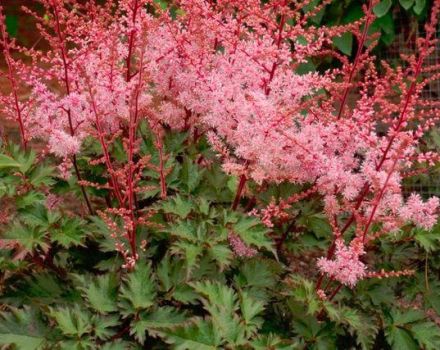
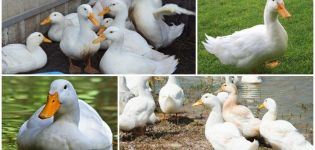
Peas can be dried in the oven much faster if placed in the oven at seventy degrees, not forty. Nothing will happen to the peas, but it will dry out twice as fast.
I do not dry peas or pickle them, I just freeze them. With this type of storage, much more useful substances are preserved. And you don't really need to bother. The main thing is to store such peas for no more than eight months.